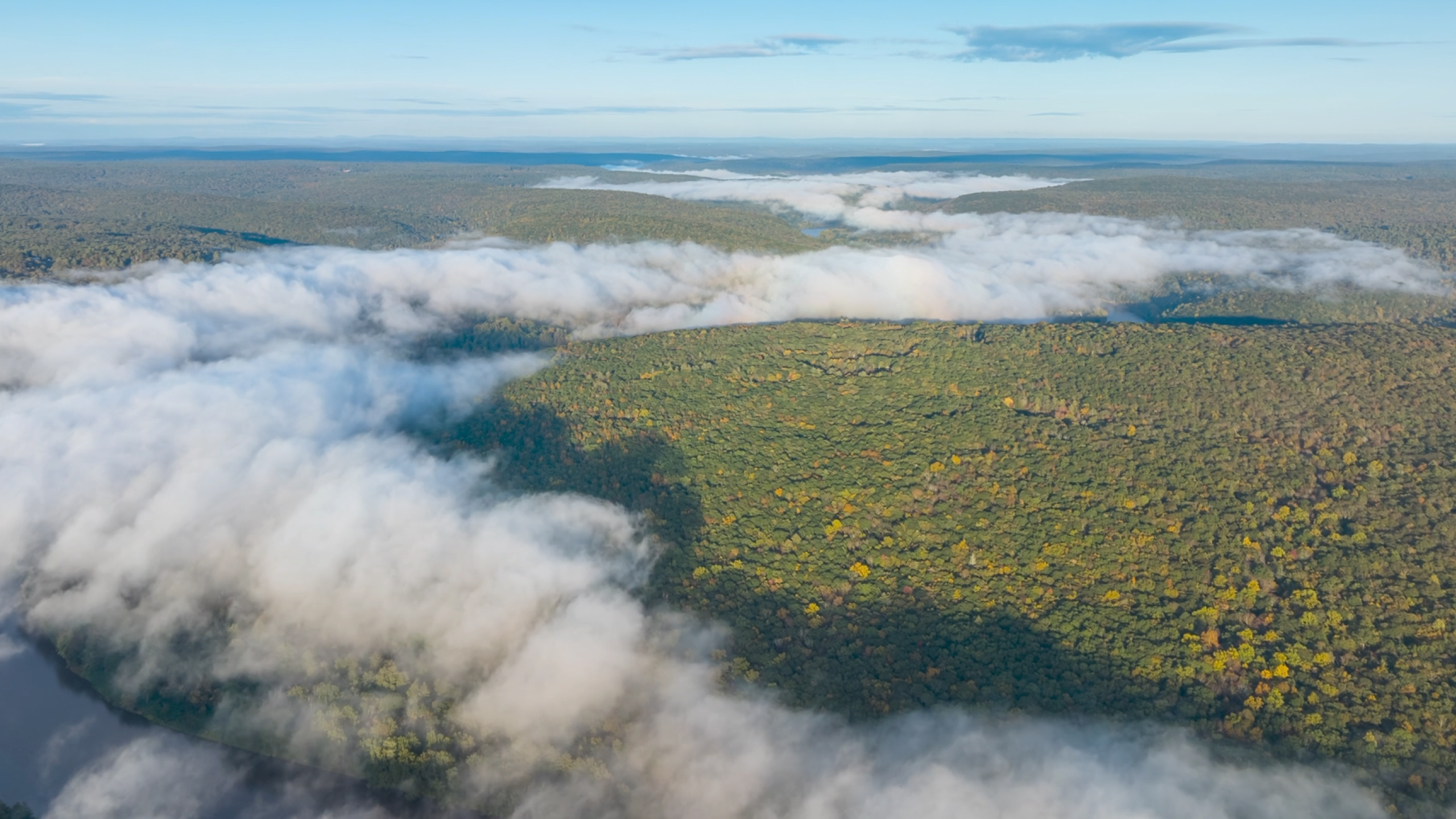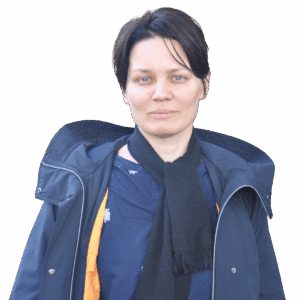
Ep 193 | Anastassia Makarieva
Why We Need Forests: Their Vital Role in Climate Dynamics, Rain, and The Biotic Pump
Description
To best understand this episode, please watch this ~2 minute video on the biotic pump.
It’s widely known that Earth’s forests provide home to countless numbers of species, act as a vast sink for carbon, and provide much of the food, materials, and clean water on which our societies rely. But emerging science shows us that forests may play another critical role: making rain. This theory, called the biotic pump theory, hypothesizes that instead of being passive recipients of rain, forests may actively create the conditions for precipitation over land – a premise that turns modern meteorology on its head.
In this episode, Nate is joined by physicist Anastassia Makarieva about the critical yet often overlooked role forests play in maintaining ecological balance and climate stability. Through the lens of the biotic pump theory, she highlights the importance of moisture and rainfall cycles, the dangers of ecosystem tipping points, and the escalating risks of deforestation. Anastassia argues that a paradigm shift is needed – one that redefines how humanity understands and manages forests in the fight against global heating.
What would climate models reveal if they fully integrated the Biotic Pump Theory? How might policies protecting against deforestation evolve if societies recognized the irreplaceable role forests play in how water moves on land? And beyond policy, how might reconnecting with our deep interdependence on forests help us rediscover a richer connection to ourselves as individuals?
About Anastassia Makarieva
Dr. Anastassia Makarieva is a Russian atmospheric physicist and senior researcher at the Petersburg Nuclear Physics Institute. She obtained her Ph.D. in atmospheric physics from St. Petersburg State University in 2000. Makarieva is best known for co-developing the “biotic pump” theory alongside the late Professor Victor Gorshkov. The theory posits that forests play a crucial role in driving atmospheric moisture transport, effectively influencing rainfall patterns over land. Her work emphasizes the importance of intact forests in maintaining climate stability and has challenged conventional climate models to incorporate the dynamic role of vegetation in atmospheric processes.
In French, we have a motto that says that a simple drawing is often better than a long explanation. Jean-Marc Jancovici Carbone 4 President
That’s very understandable because with left atmosphere thinking, one of the problems is that you see everything as a series of problems that must have solutions. Iain McGilchrist Neuroscientist and Philosopher
We can’t have hundreds and hundreds of real relationships that are healthy because that requires time and effort and full attention and awareness of being in real relationship and conversation with the other human. Nate Hagens Director of ISEOF
This is the crux of the whole problem. Individual parts of nature are more valuable than the biocomplexity of nature. Thomas Crowther Founder Restor
Show Notes & Links to Learn More
Download transcript- Watch Before Listening!: 2-minute primer on the Biotic Pump, Additional Info
- Nature Photos by Anastassia within the episode: Group 1 + Group 2
- “Biotic Pump and Flying Rivers” short video by Biotic Regulation
00:00 – Anastassia Makarieva, Works, Substack, Biotic Regulation Website
03:57 – Victor Gorschkov
04:18 – Landau and Lifshitz – Course of Theoretical Physics
07:11 – Biosphere and influence on Earth’s climate
08:01 – Biotic Regulation of the Biosphere, Gorschkov/Gorschkov/Makarieva – Biotic Regulation of the Environment: Key Issues of Global Change
08:42 – Theoretical physics
11:56 – A. Makarieva: “prevailing climate change narrative overlooks the critical role of
13:01 – Clouds and climate
11:58 – Crowther, et al. – “Mapping tree density at a global scale”, Thomas Crowther (TGS Episode)
15:41 – “Hot model” climate simulations
21:58 – CO2 fertilization theory, Link to original study
23:01 – Anastassia’s Substack on incremental change in terrestrial biomass, Original study she mentions, More info
24:03 – Makarieva, Gorschkov – “The Biotic Pump: Condensation, atmospheric dynamics and climate”, Biotic pump short video explanation
30:22 – Atmospheric scale height
32:23 – Inter-Tropical Convergence Zones
32:59 – The Amazon Makes its Own Wet Season
33:28 – Jonathon Wright, Rong Fu: “Rainforest-intiated wet season onset over the southern Amazon”
35:10 – Temperature gradient
39:39 – 2023 Amazon drought
39:46 – 2024 Amazon drought
40:00 – Bolsanaro’s presidency and the Amazon
40:56 – 2024 Protected Areas of Central Africa Report (OFAC), Central Africa’s tropical rainforests under threat
41:11 – Indonesian forests as critical biodiversity and carbon hub
42:21 – Papua New Guinea rainforests
42:36 – UN study: “Greater attention to boreal forests needed”
44:06 – Arctic amplification
44:21 – Forest transpiration processes
48:57 – Convective parametrization
53:25 – Fix Our Forests Act (H.R. 471)
55:13 – Dew point
56:46 – Bradley, et al. – Forest protection and forest fire relationship in the western U.S.
57:38 – Lindenmayer, et al. – Landscape traps in wet forests
58:52 – How did the Sahara Desert form?
1:00:01 – Fossil evidence suggests that Australia was once dominated by rainforests
1:00:53 – Australia’s burning history over 130,000 years
1:03:20 – 2004 Greece hires army members to protect Northern forest from people cutting for firewood
1:04:21 – Graph inserts: History of energy consumption in USA, Forest states in the USA, European Russia relative forest area, Source
1:06:51 – Amazon rainforest dry season transpiration
1:10:14 – Proforestation
1:10:46 – Population sinks and sources
1:11:49 – Dr. Carlos Nobre, (TGS episode)
1:11:56 – Dr. Nobre on tipping points in the Amazon
1:13:11 – Amazon rainforest’s flying rivers
1:13:28 – Dr. Antonio Nobre
1:14:51 – Flying rivers and the biotic pump
1:17:47 – Yeh, et al. – “Siberian vegetation growth intensifies monsoon precipitation in southern East Asia…”
1:18:32 – Climate sensitivity
1:20:04 – Albedo
1:23:05 – Goessling, et al. – “Recent global termperature surge intensified by record-low planetary albedo”
1:24:27 – 2024 Munich conference: Embracing Nature’s Complexity
1:27:41 – Spaceship earth worldview
1:34:49 – Logging industry spreads information about cutting in the name of “fire prevention”
1:35:52 – The White Sea
1:38:00 – Yenisei River, Map
1:44:35 – EcoSummit 2024: Eco-Civilization for a Sustainable and Desirable Future
1:44:56 – Russian timber supply to China
1:55:01 – Increasing mutation load in mammals
1:56:23 – Graph Insert: Distribution of energy consumption vs. animal size, Original Study
1:58:35 – ”Enshittification”







